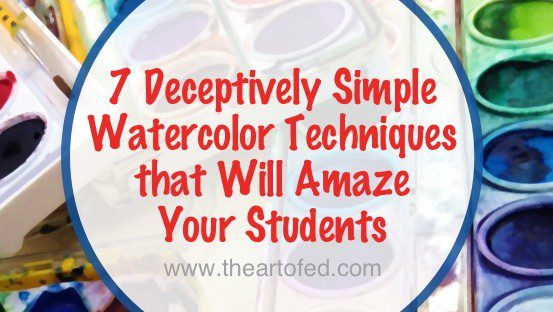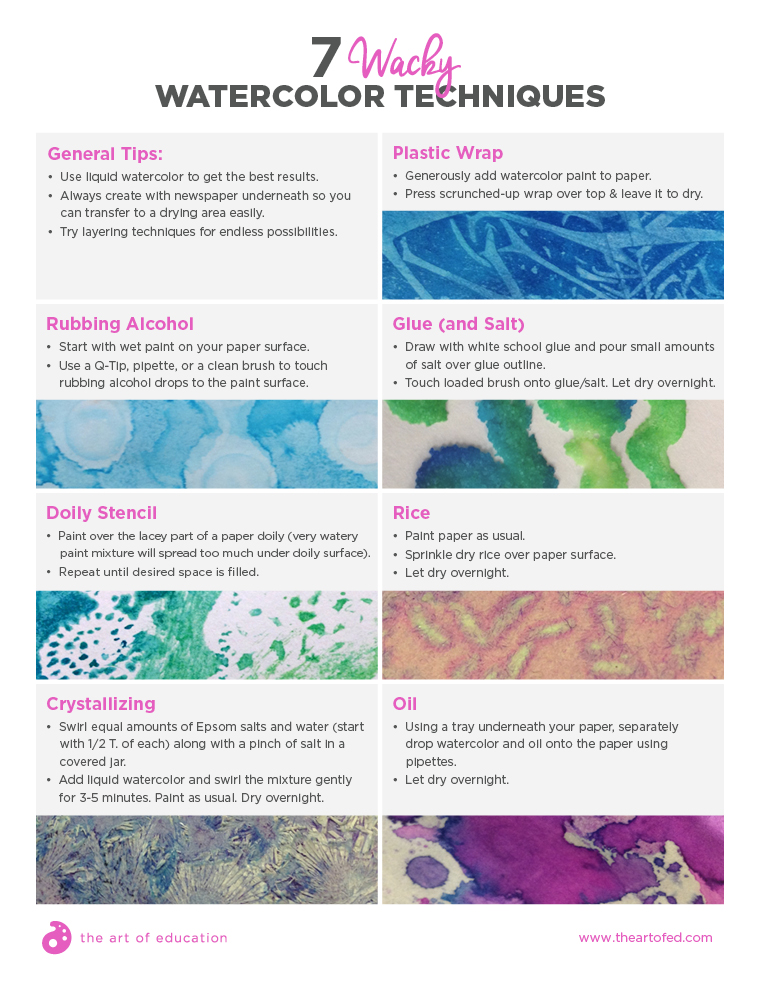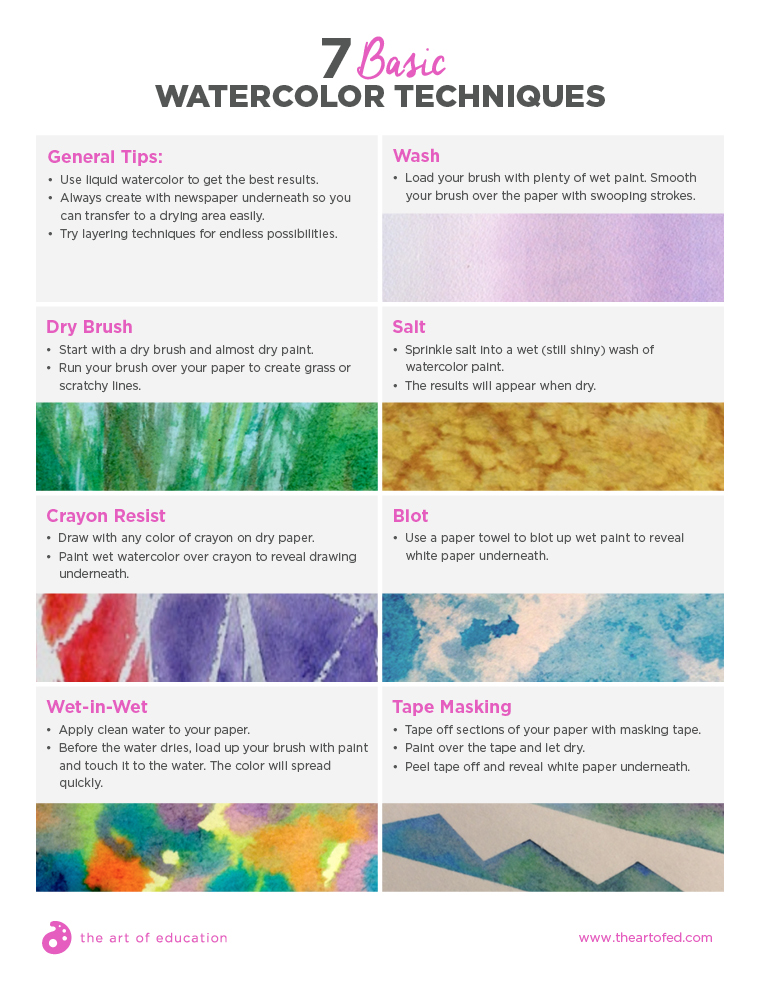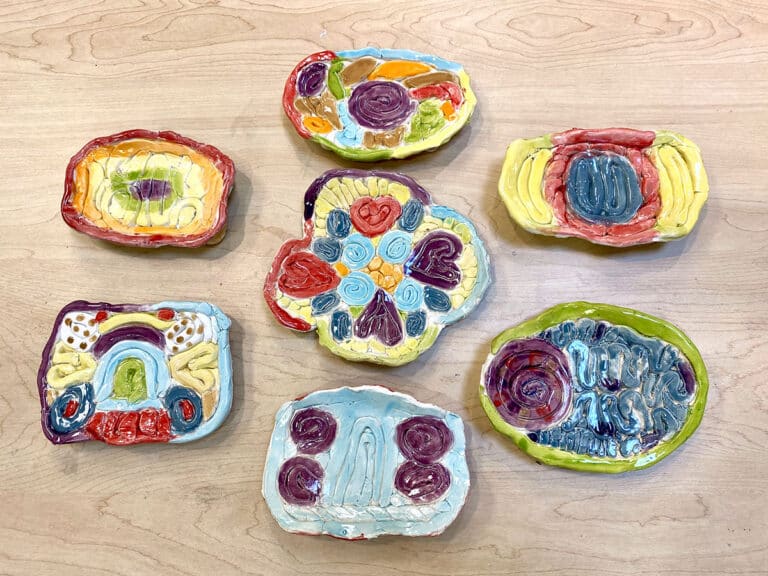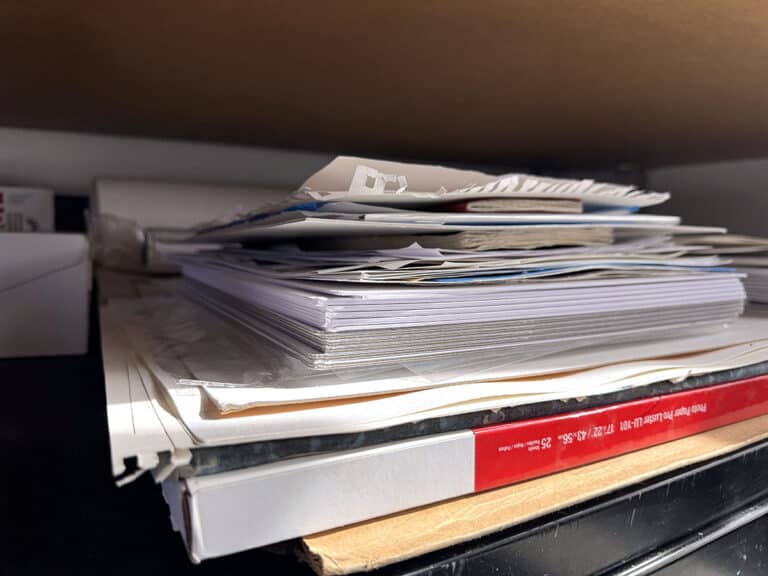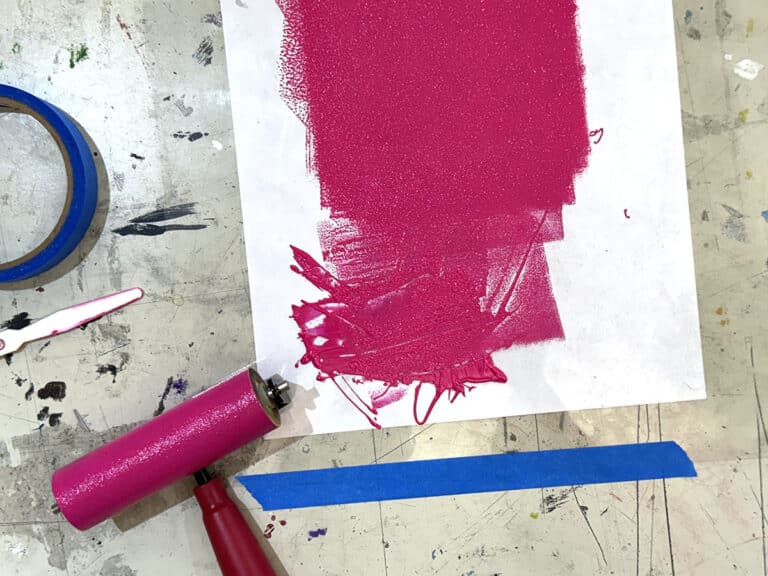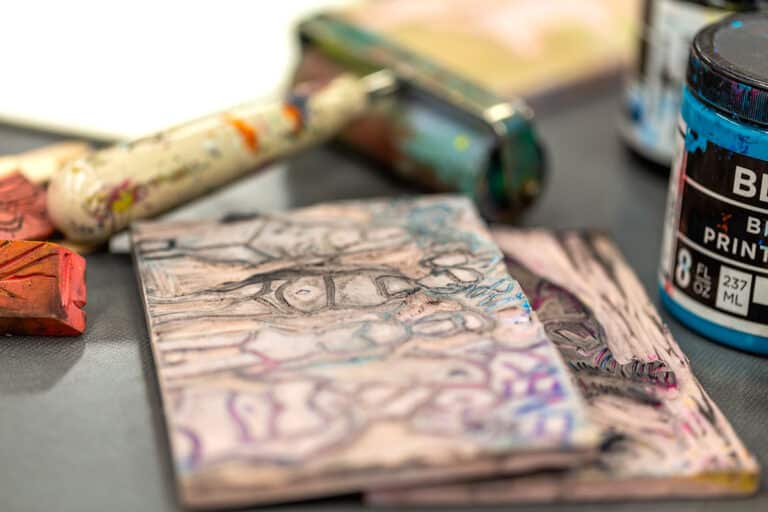Watercolor paint is by far my favorite medium in my classroom. The versatility, approachability, inexpensive cost and ease of clean-up make watercolor a sure bet for such a wide variety of projects. However, there is one thing that takes this fabulous medium to a level of unmatched proportions — mixing it with common household materials. From rice and oil to rubbing alcohol and plastic wrap, the list is endless.
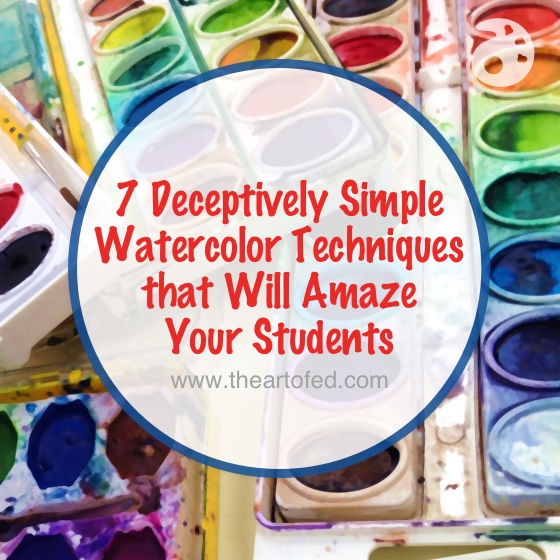
Here are 7 ways to mix pantry supplies and watercolors to create dynamic results for your next painting project.
Before we dive in, a word of caution. While these techniques are beautiful and interesting, it’s important to know where and when to use them within a finished piece. If it’s been a while since you’ve explored the wonderful world of watercolor, look no further than the AOEU course Studio: Painting – Watercolor. You’ll learn the ins and outs of this versatile medium all while creating your own art! You may also want to check out the Watercolor Painting Basics and Color Theory through Watercolor PRO Packs for even more tips and tricks. You can find these Packs in PRO Learning to learn more.
1. Plastic wrap (shattered/broken mirror effect)
Generously add watercolor paint to paper using a basic technique, such as wet-in-wet, first. Then, press scrunched-up plastic wrap over the top and leave it to dry. The watercolors will pool under the plastic wrap texture and dry there, creating an interesting, textured look. Tissue paper will give a similar effect.
2. Rubbing alcohol (unique organic, bubbly effect)
Start with highly concentrated wet paint on your paper surface. Use a Q-Tip, pipette, or even just a clean brush to touch rubbing alcohol drops to the paint surface. The rubbing alcohol will cause the paint to repel, pushing it away while leaving a lighter color exposed.
3. Doily stencil (beautiful lace pattern)
Carefully paint over the lacey part of a paper doily. Be careful not to use too much water or the paint will spread under the doily’s surface. Repeat until desired space is filled.
4. Crystallizing (rough but shimmery effect)
Shake or swirl equal amounts of Epsom salts and water (start with ½ tsp. of each) along with a pinch of salt in a covered jar. Add liquid watercolor for your desired hue. Swirl the mixture gently for 3-5 minutes and paint as usual. Dry overnight. Saturate paper with paint mixture to form large crystals.
5. Rice (smooth blobs of absorbed color)
Paint paper as usual (use other techniques like a graded wash to create a more interesting effect). Paper should be very wet with paint before sprinkling dry rice over paper surface. Let dry overnight.
6. Oil (intense tie-dye)
Pour small amounts of liquid watercolor and cooking oil into separate containers. Put a tray underneath your paper and slowly drop watercolor and oil onto your paper using pipettes. Limit your color palette to a few colors to prevent paint from mixing into brown puddles. Let dry overnight.
7. Glue and salt (rough, textured outline)
Begin by drawing with white school glue. Pour small amounts of salt over glue outline. Carefully touch watercolor brush onto glue and salt line. Color will bleed with glue and salt. Let dry at least overnight.
Give these techniques a whirl with your next watercolor center or project. Your students will be amazed at the versatility and fun that this paint offers. If you’re looking for more techniques like these, you might be interested in our Instructional Strategies class where students focus on delivering instruction, 2D and 3D techniques, engagement activities and so much more. It’s a slam dunk for new and veteran teachers alike! Finally, I’ve created a quick reference guide for all the techniques mentioned available for download below!
Download NowFor even more watercolor tips and tricks, don’t miss these PRO Learning Packs! Look for these Packs in PRO Learning to learn more.
- Watercolor Painting Basics
- Color Theory through Watercolor
Need a refresher on some basic watercolor techniques? Here is a basic watercolor techniques handout as well.
Download NowWhat is your favorite way to use watercolor paint?
What uncommon materials do you mix with this medium to get unique results?
Magazine articles and podcasts are opinions of professional education contributors and do not necessarily represent the position of the Art of Education University (AOEU) or its academic offerings. Contributors use terms in the way they are most often talked about in the scope of their educational experiences.
